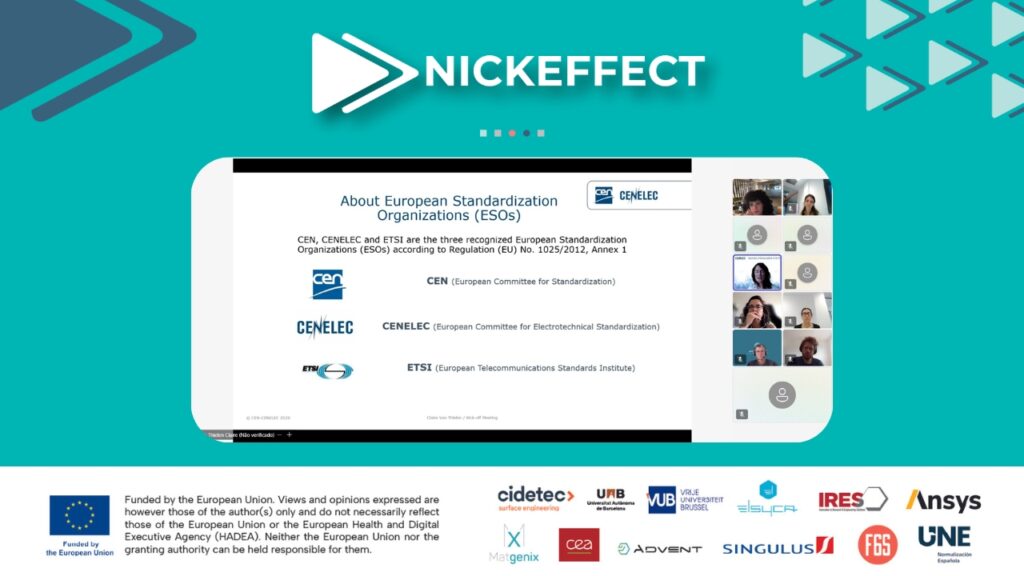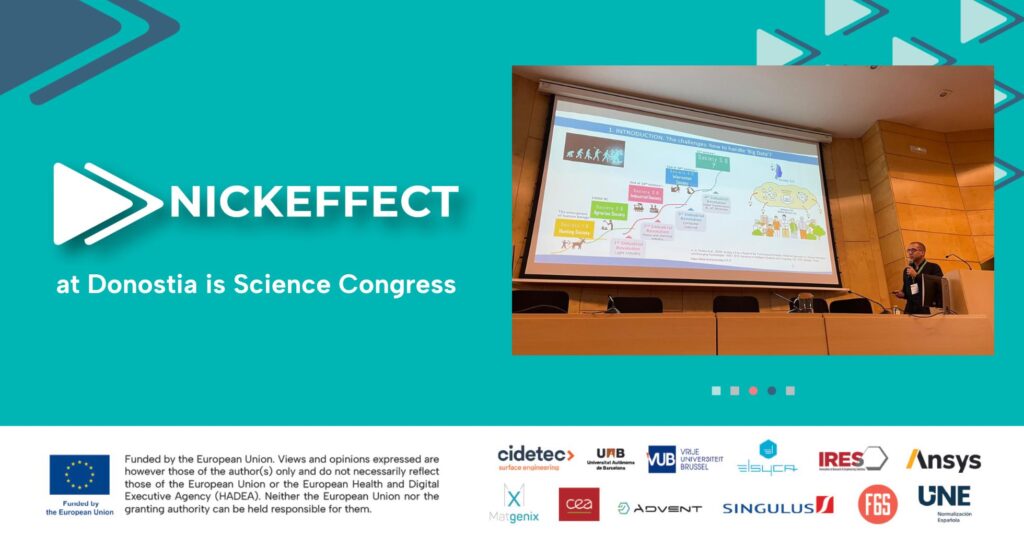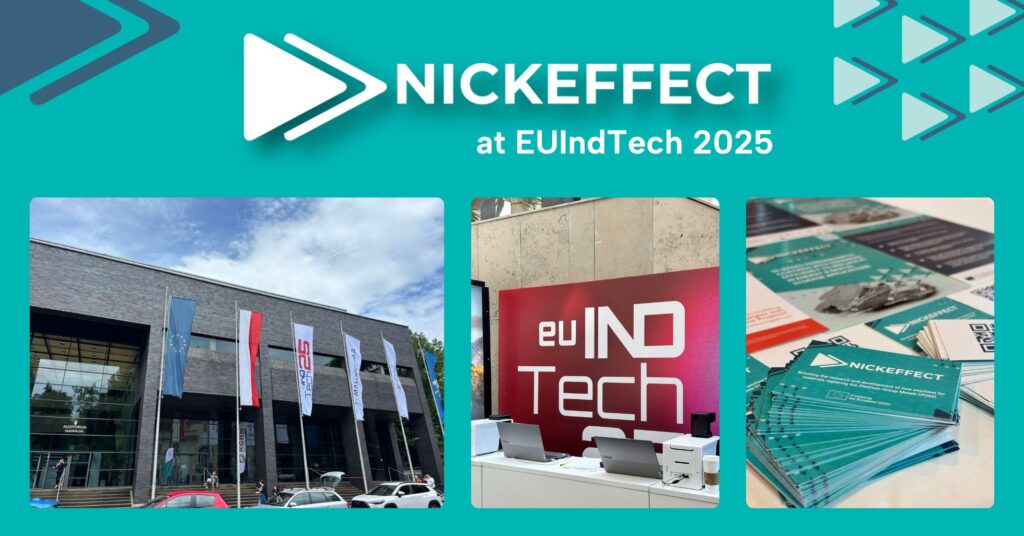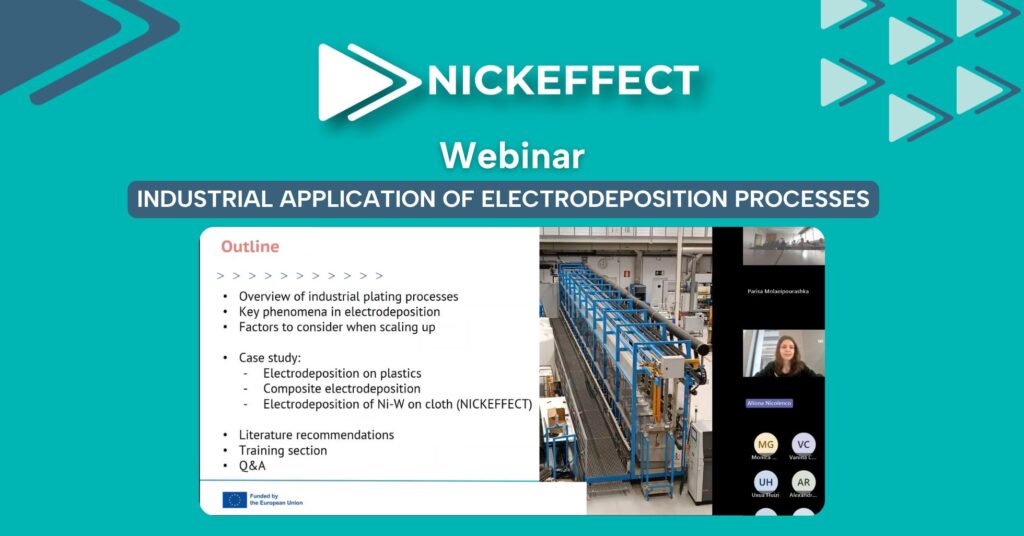News
The NICKEFFECT project was a key partner in the CEN/CENELEC kick-off workshop held on June 18th, which focused on “Electrochemical characterisation at laboratory scale of non-noble porous metal-based electrodes for […]
Professor Jordi Sort, an ICREA Professor from the Autonomous University of Barcelona (UAB) and a key partner in the NICKEFFECT project, delivered a compelling Plenary Talk at the international conference […]
The NICKEFFECT project successfully showcased its innovative work at the EU-flagship EUIndTech 2025 event, held in Krakow, Poland, from June 2nd to 4th, 2025. Representing the project were Danijel Pavlica […]
NICKEFFECT recently hosted a highly insightful webinar titled “Industrial Application of Electrodeposition Processes,” providing a comprehensive look into the practical aspects and innovative potential of this critical technology. Held on […]
On May 12th, NICKEFFECT project partner Vrije Universiteit Brussel organised a successful webinar titled “Electrodeposition Strategies for Fabricating Porous Alloys,” presented by Dr. Eva Pellicer, Full Professor in the Department […]
NICKEFFECT’s upcoming webinar titled “Industrial Application of Electrodeposition Processes”, will offer insights into the practical aspects and innovative potential of this technology. Professionals, researchers, and individuals interested in the […]






